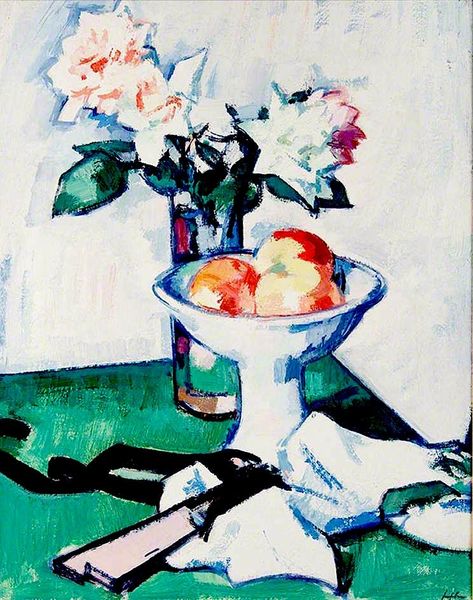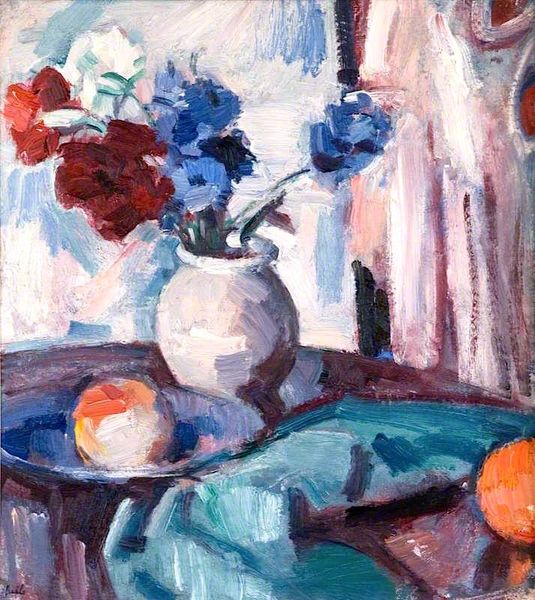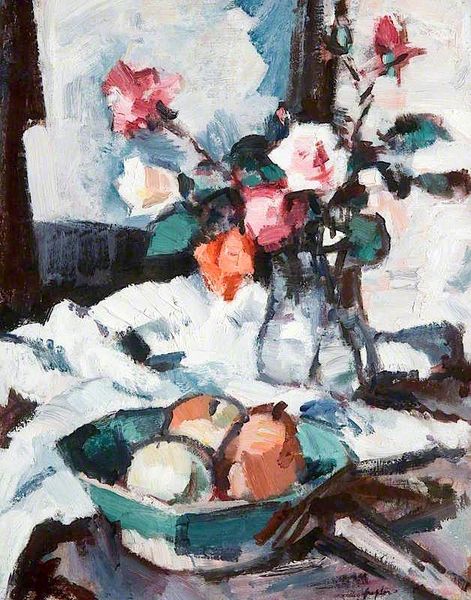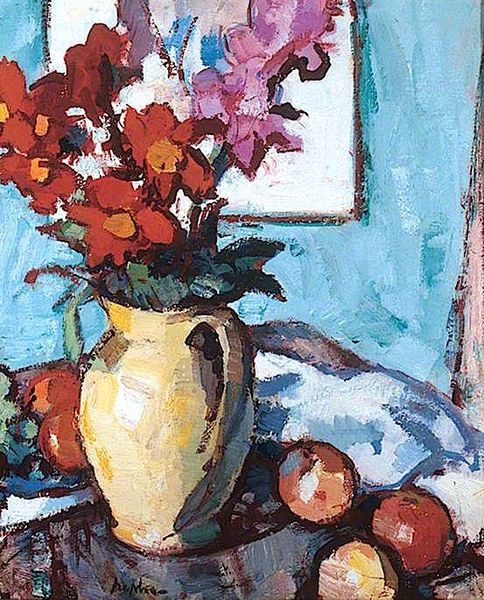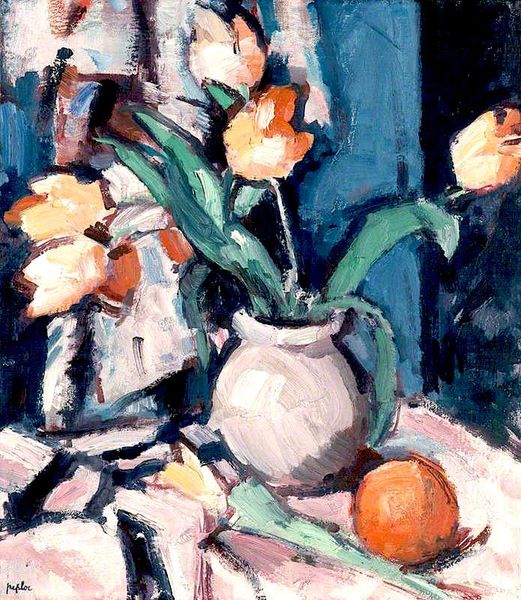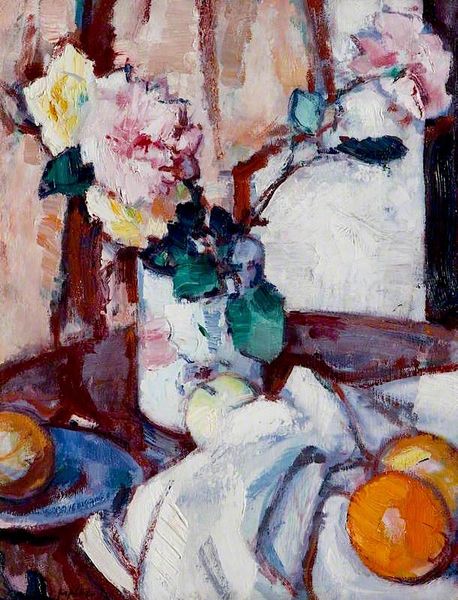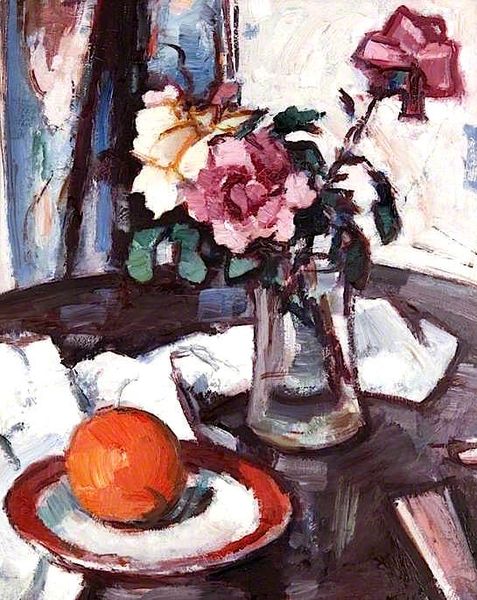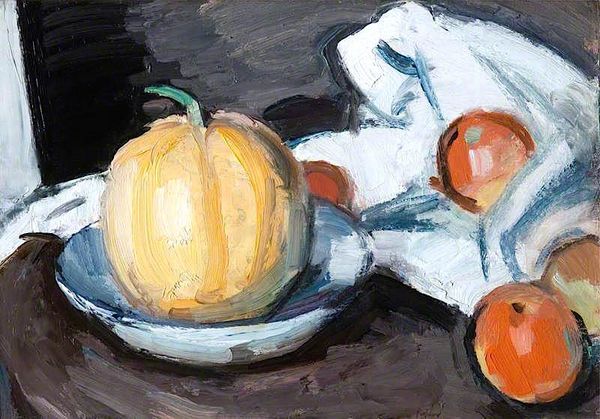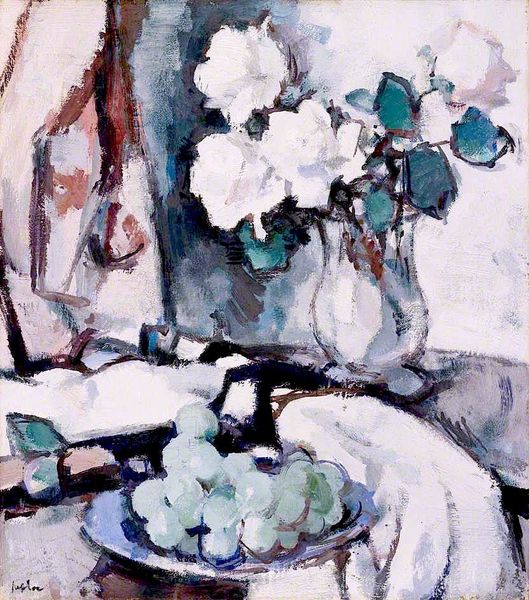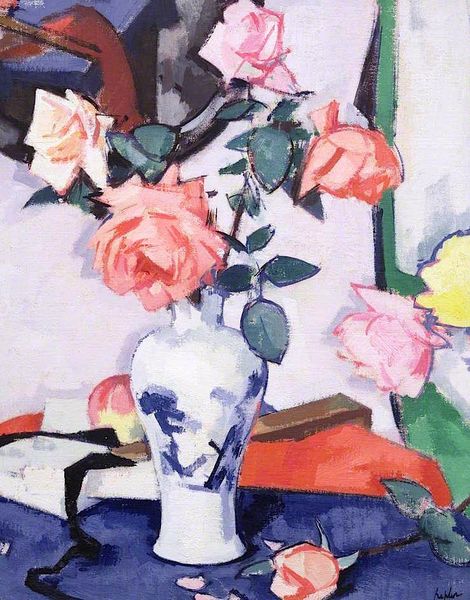
oil-paint, photography
#
still-life
#
fauvism
#
oil-paint
#
photography
#
oil painting
#
post-impressionism
Copyright: Public domain
Editor: So, this is Samuel Peploe’s *Still Life, Roses and Apples,* done with oil paint. It feels almost unfinished, which I like, with those visible brushstrokes. How do you interpret this work, looking at it through a wider lens? Curator: I see here a fascinating intersection of class, gender, and domesticity. Still life, historically, has been coded as feminine—a genre often relegated to women artists or seen as less significant than, say, history painting. And here we have Peploe, a male artist, engaging with these supposedly ‘feminine’ objects: flowers, fruit, arranged domestically. Editor: Interesting! So is he subverting those ideas, or reinforcing them? Curator: That's the complex part, isn't it? The bold, almost aggressive brushstrokes, the Fauvist influence, challenge any notion of delicate femininity. But by choosing these objects, he also can’t fully escape the traditional associations. It brings forward issues around artistic agency and how art can be a conversation about cultural ideas around gender, regardless of the creator's intent. Notice how the composition draws the eye. The placement feels deliberate and controlled. Do you get a sense that things are intentionally positioned to be seen a certain way? Editor: Definitely! The strong blues against the reds of the apples… it's almost confrontational, now that you mention it. It isn’t passive or traditionally "pretty.” Curator: Exactly. Peploe presents a negotiation, I think, a questioning of these traditional boundaries in a time of great change. We also can ask what do you think this negotiation and disruption do to those existing boundaries? Editor: Wow, I never would have seen all of that just looking at pretty roses and apples. Curator: That’s why situating artworks in their historical context is essential; it prompts us to engage critically. Now when I see it, I don’t think of domestic, traditional roles but more of breaking boundaries that existed around it.
Comments
No comments
Be the first to comment and join the conversation on the ultimate creative platform.
